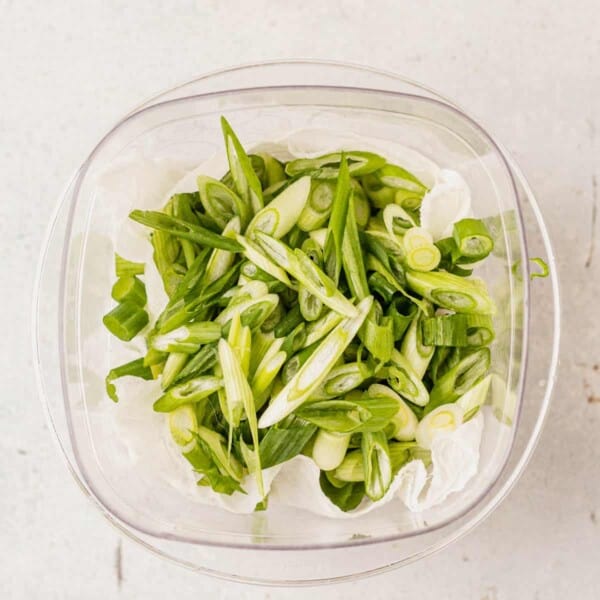Fresh green onions make a great addition in so many delicious recipes and can be used in the recipe or as a garnish. Follow these step-by-step instructions for how to store green onions to enjoy fresh green onions for days and even weeks to come!
Looking to store more fresh herbs? Learn how to keep cilantro fresh or how to freeze basil.
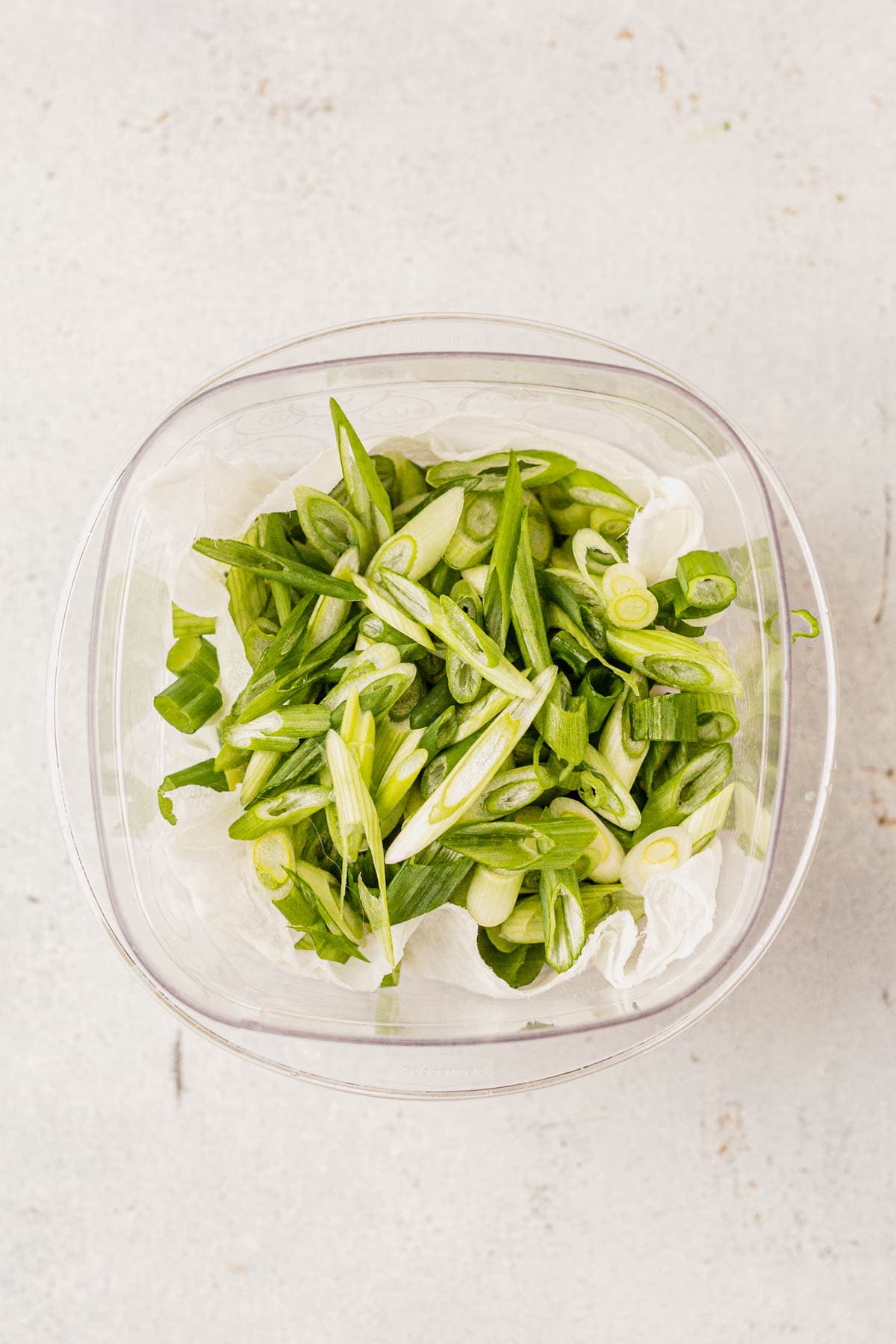
After you’ve learned how to cut green onions, you may be wondering how to store your extra green onions. We’ve research simple methods to store your fresh green onions and help eliminate food waste; keep reading to see which is the best way for you!
We love using fresh green onions to top our instant pot Mongolian beef or ground turkey teriyaki rice bowls. To really capture the flavor, we love adding sliced green onions to this fall salad with chicken, apples, and butternut squash. They make an amazing garnish, especially on this mushroom and spinach stuffed flank steak.
What are Green Onions?
Green onions are vegetables characterized by their long green stalks with white parts at the end. The white parts are typically a bulb in shape; this is the onion! You typically buy a bunch of green onions from your grocery store, which is why you may have leftovers that you need to store. They may or may not be wrapped in a rubber band when you buy them.
They are members of the allium family, which not only includes many types of onions, like white onions, yellow onions, and red onions, but also includes garlic, shallots, and chives.
They’ve also got a host of health benefits, so adding them to your meal is both delicious and nutritious.
Green Onions vs Scallions
Scallions and green onions are often used interchangeably, but they are actually slightly different varieties of onions. Here’s the difference:
- Scallions: Scallions are a type of onion with a long, straight white stem and long green leaves. The white part of the scallion is milder in flavor than the green part, which has a more pungent, onion-like taste. Scallions are often used in Asian cuisine, particularly in dishes like stir-fries and soups. If you have scallions, be sure to try them on these sweet and spicy pork lettuce wraps.
- Green onions: Green onions are a young, immature onion that is harvested before the bulb has fully developed. They have a small white bulb with long green leaves and a milder flavor than most other onion varieties. Fresh green onions a versatile ingredient and are often used in Mexican and American cuisine, particularly in dishes like salads, soups, and stews. Try adding them into this already veggie-packed low-carb turkey vegetable soup!
Green onion is often an umbrella term used to encompass any young onion, including green onions, spring onions, or scallions.
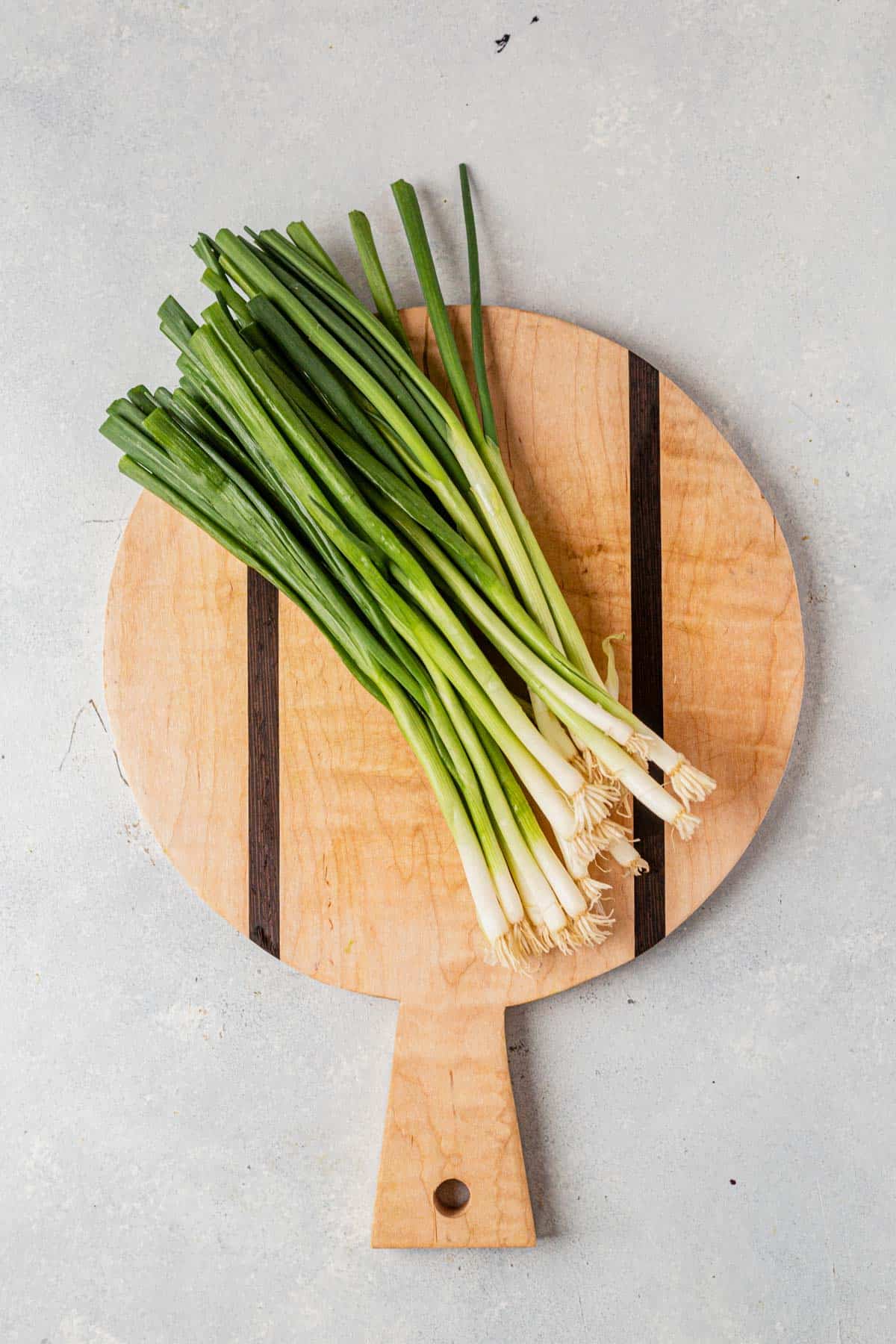
How to Store Green Onions
Storing Green Onions
If your bunch of green onions is pretty large, you can store the extra fresh green onions for later use! There are several easy ways to store cut fresh green onions or an entire uncut bunch of green onions. Spoiler alert: one of the ways may even help them continue to grow!
Method 1: Paper Towel Storage Method
The paper towel method is great if you’ve gotten a little chop happy (happens to the best of us!) and have cut off the root end of your bunch of green onions. If you use green onions often, this storage method may be the best way for you to store them!
- Cut the green onions. For this method, go ahead and prep your green onions to the preference of your cut. If you’re unsure on how you want to cut them, check out our “how to cut green onions” tutorial!
- Wrap in damp paper towel. Wrap your cut green onions in a paper towel. It’s important to not have too much moisture as excess moisture will cause rotting. Another easy way to do this is wrap in a dry paper towel and spritz with a little bit of water; however, again, focus on avoiding excess moisture.
- Place in storage bag. You can use a zip-top bag or a freezer bag, but make sure it closes! Please your wrapped green onions, damp paper towel and all, into the storage bag.
- Refrigerate. Place the bag into the crisper drawer of your refrigerator.
Shelf life: With this storage method, your green onions should last 2-3 weeks; however, make sure to check that your damp paper towel remains damp!

Method 2: Mason Jar Storage Method
If you have a mason jar (or tall glass or large glass jar), you can store your bunch of green onions upright in the fridge! This is a great option if the root ends are still in tact.
- Fill mason jar with cold water. You don’t need much – just about an inch of water – or enough to cover the white parts of your green onion.
- Place green onions in jar of water. Your glass jar must be able to support the upright green onions without them falling over.
- Place plastic bag over the green onions in the jar. You can use a freezer bag or other type of storage bag. Your bag does not need to CLOSE around the jar, just go over the vegetables in the jar.
- Refrigerate. Place green onions and glass of water in the refrigerator.
Shelf life: With this storage method, your green onions should last 2-3 weeks. Refill the water as needed!
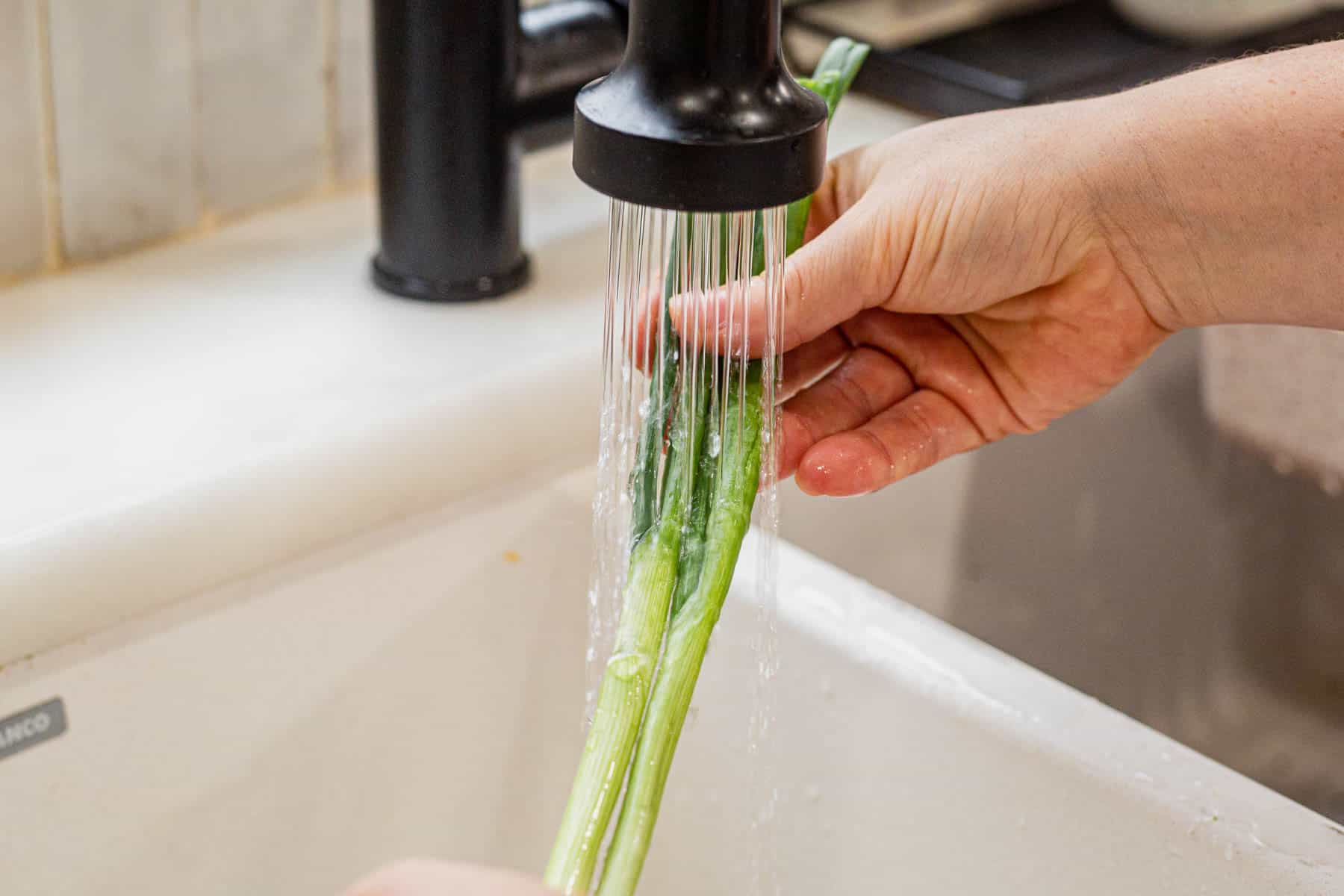
Method 3: Window Storage Method (keeps them growing!)
Something fun and unique about green onions is that, in the right conditions, they will actually continue to grow! This storage method allows them to last months, if you switch out the water enough. This is good news for those who may not use fresh green onions regularly, but don’t want their bunch to go bad! The even better good news is that all you need is a mason jar or large glass jar! Using this method is an easy way to cut down on food waste and give your green onions a longer shelf life.
- Place white bulb in jar of water. This step is similar to the jar storage method from above. Place the green onion bulbs in cold water, ensuring the bulbs are covered.
- Note: Unlike the jar method in method 2, you do not cover the green onions and mason jar with a bag.
- Find a sunny spot on a windowsill. Leave the jar with the green onions sitting on a windowsill that gets plenty of light.
- Keep root ends covered with water. As long as you make sure the root ends are covered with water, you will have fresh green onions for months!
Shelf life: With this storage method, your green onions should last at least a couple of months, if not longer! Refill and change the water as needed.
Editor’s note: This storage method may make some apprehensive since the vegetables are out at room temperature. We take food safety very seriously at WMM and promise you that as long as you change out the water, this storage method is perfectly safe and acceptable for storing your green onions!
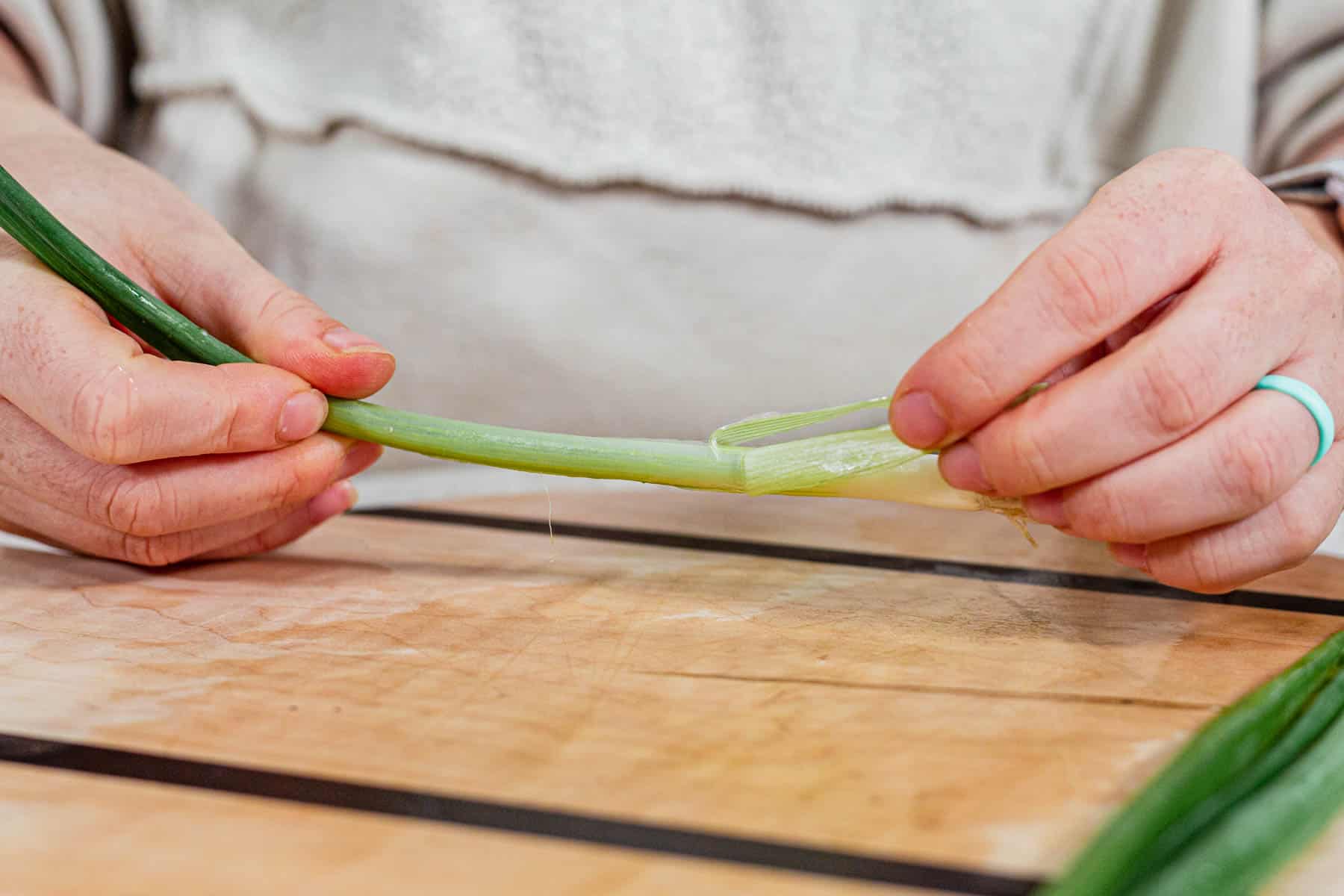
Method 4: Freezer Storage Method
That’s right – you CAN freeze your green onions! This is another easy way to give your fresh green onions a longer shelf life.
- Pat them dry. It’s important to first ensure that your green onions are dry. This prevents the development of ice crystals and helps to avoid freezer burn.
- Slice them into small pieces. Once you have sliced your green onions, there are two methods to freeze them
Freezing options:
- Place in freezer-safe storage container. Place your sliced green onions in a freezer safe storage container and place in the freezer.
- Note: it’s important to take the storage container out of the freezer after an hour and shake the green onions. This prevents them from sticking together while they freeze!
- Place on a baking sheet. Place your sliced green onions on a baking sheet and put the baking sheet in the freezer. Flash freeze for 1-2 hours and then place in your freezer-safe storage container. Place that container back in the freezer. The baking sheet method also helps ensure the green onions don’t stick together!
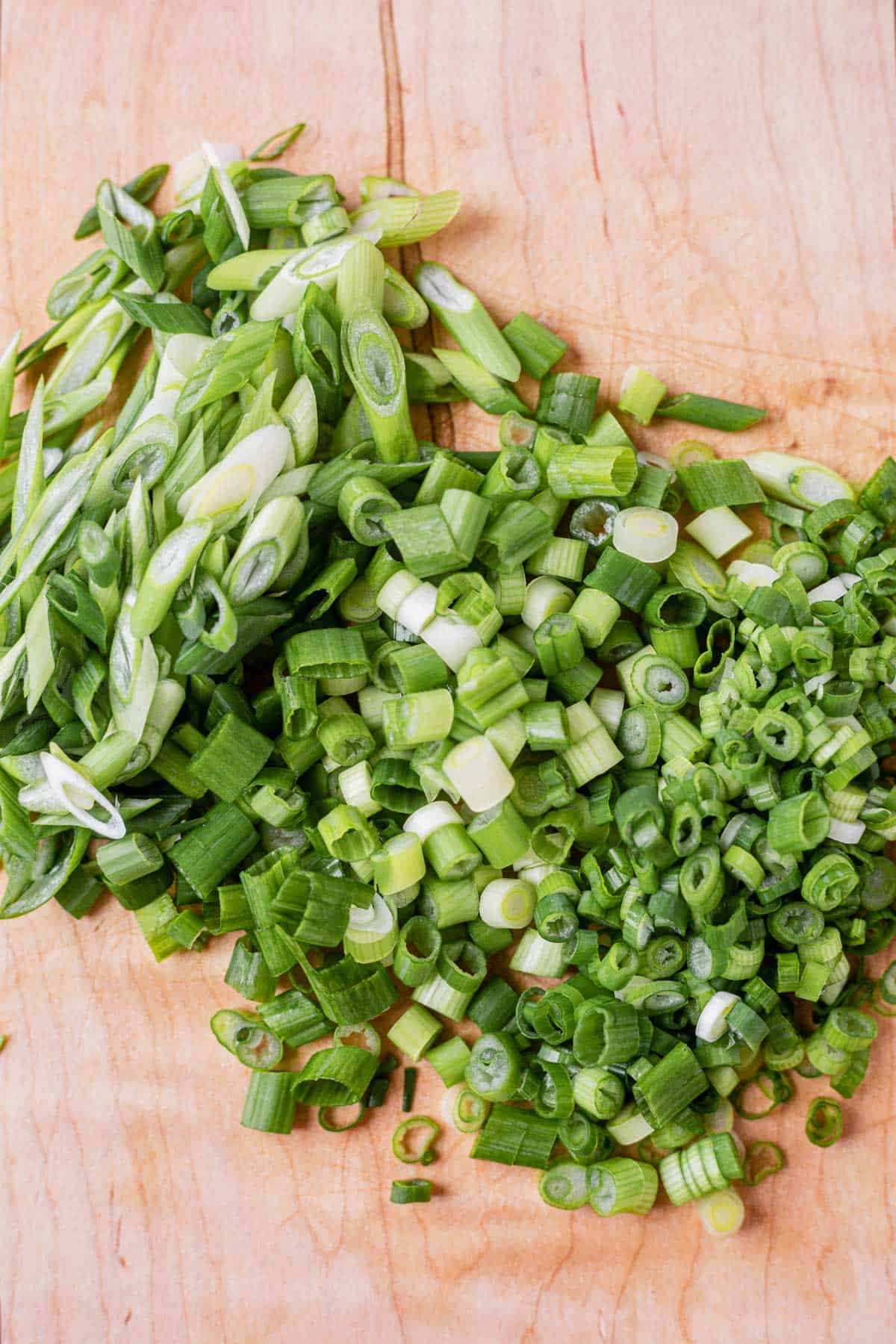
Expert Tips for Making Green Onions Last
To ensure your bunch of green onions last a long time, it’s a good idea to make sure you take proper care of them before storing. Following these important steps will increase the shelf life of your fresh green onions!
- Always start with fresh green onions: At your grocery store or market, check the freshness of green onions carefully by making sure the green parts are not wilted or slimy. The fresher they are when you bring them home, the longer they will last!
- Treat them with care: The green part of the onions is delicate, so you want to be careful not to break or smash them. Using a produce bag to protect your green onions and placing the bunch of green onions at the top of your grocery bag so that it doesn’t get crushed by other items will help transport them unharmed.
- Understand that the root end is a green onion’s key to life: It is so important to keep the root end intact until you are ready to use your green onions. This will start the clock on how long you have to use them. Green onions with the root end in tact can last for a couple of months. Don’t cut until you’re ready to use!
- Green onions benefit from excess moisture: When you get home, get the white bulb of the green onions into some water quickly so the green parts don’t wilt. This will help your green onions keep their bright green tops for a longer period!
- Don’t let them get too cold: Unless you are freezing your green onions, it’s important that you don’t let them get too cold. While the fridge can be a great place to store green onions, it’s a good idea to keep them out of any spots in your fridge that get very cold or accidentally freeze items.

Frequently Asked Questions
For long-term storage, you can freeze your green onions and get a longer shelf life. To do this, blanch and flash freeze your fresh green onions in a process similar to freezing kale.
Depending on which method you use, fresh green onions can last anywhere from a couple of days to 2-3 weeks. The best way to ensure your green onions last is by using a proper storage method! This is key to the longevity of the onion.
The entire green onion gives an onion flavor but depending on which part you use, the onion flavor strength can vary! The white bulb contains a stronger onion flavor and the green stalk provides a more mild onion flavor.
Discard or compost the very end of the root, but can cut and use the green or white parts in your cooking or to garnish.
You can eat the entire onion! Once you clean your green onion, remove the outer layer, and cut off the root end (the only non-edible piece of the green onion), you can eat everything that remains!
We are so glad you asked! Review this tutorial on how to cut green onions to find the best way to cut your green onions. If you’re looking to sharpen your veggie cutting knife skills, be sure to check out 4 ways to cut a bell pepper and how to cut shallots.
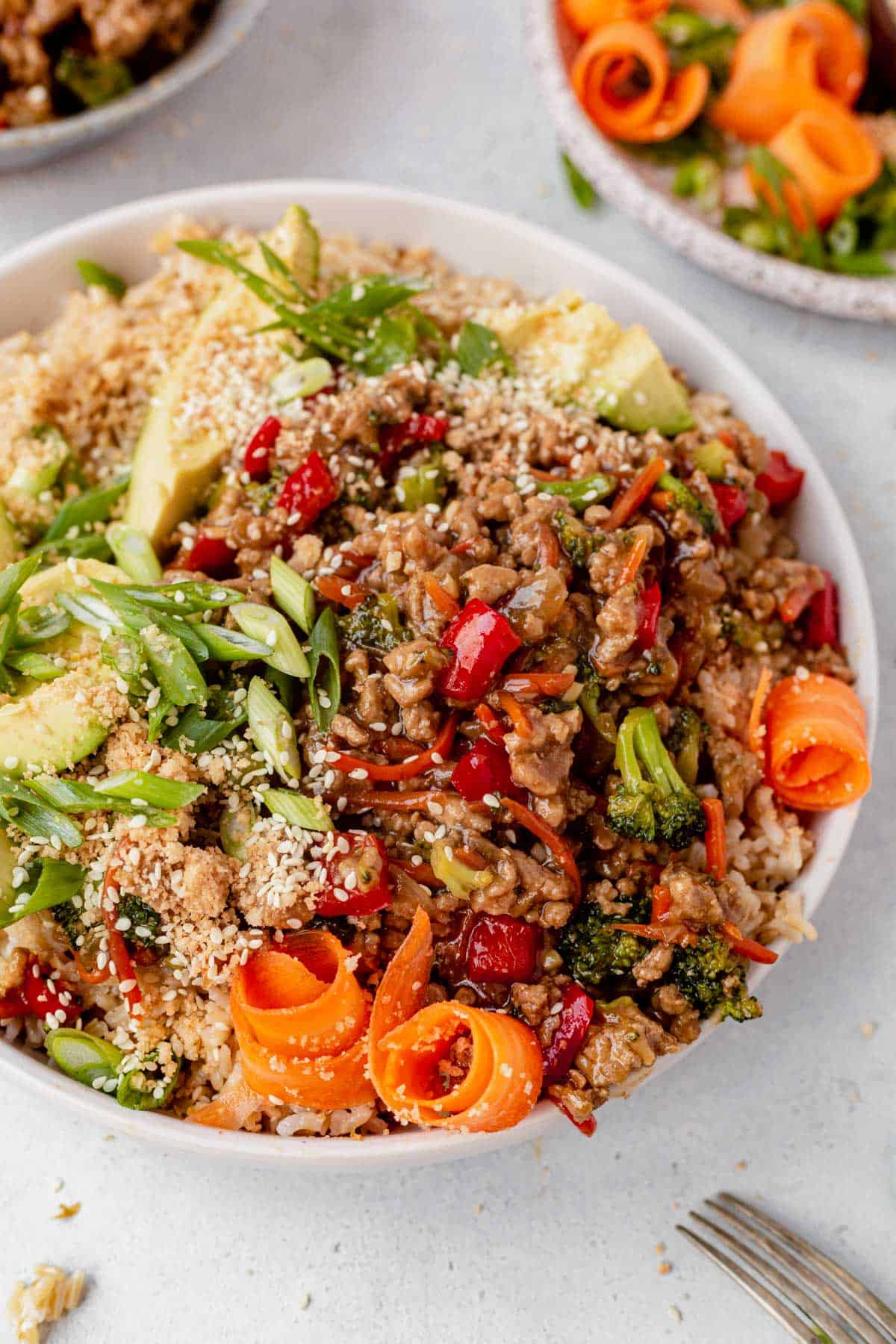
This post may contain affiliate links. Read our disclosure policy.

